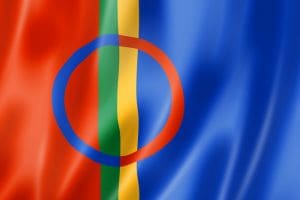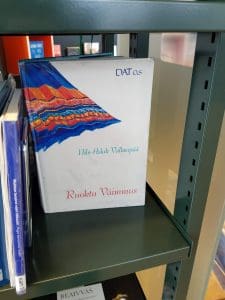
During college, I wanted to learn about my heritage, so I studied the Swedish language and Scandinavian literature. I took a class about the Sami, the indigenous people who live in Northern Norway, Sweden, Finland and Russia's Kola Peninsula. Here's just a few things I learned about the Sami.
History
Early works by historians are thought to reference the Sami by different names as early as the 200 CE. It's also possible they invented skis! They were a Nomadic people whose livelihood was dictated by the seasons and the bounty of the land.
If they were living near the coast, they fished. If they were inland, they often hunted or kept herds of reindeer. Their homes were temporarily dwellings called Lavvu (or Goahte), opens a new window, which looked remarkably similar to a teepee.
The Sami lived in the northern parts of Scandinavian (Sweden, Norway, Finland and Denmark), and the Norse people lived in the the southern areas. When the two cultures began to interact, the Norse people labeled the Sami as "primitive" people, and they passed laws that stripped the Sami of their language, religion and way of life. Many Sami children were sent to state-run boarding schools.
Language & Culture
As a Nomadic people, the Sami language is diverse. They have ten distinct languages, six of which have their own written versions. All of these languages are related to but not especially similar to Finnish, Estonian and Hungarian.
The Sami language was illegal in Norway from 1773 until 1958, so for many years, the number of speakers dwindled. Now, the UNESCO classifies many of the Sami languages as definitely endangered and a few are already extinct (Source: Sami Languages on Wikipedia, opens a new window).
The Sami have a rich, vibrant culture. Their traditional music is the joik, which is a form of chant or poem that is typically sung without musical instruments. Many people first heard a joik during the 1994 Winter Olympics in Lillehammer, Norway.
Nils-Aslak Valkeapää wrote and sang the joik while wearing traditional Sami dress. To see and experience this stunning moment, go to 8:40 in this Olympics website video, opens a new window.
Valkeapää also wrote beautiful poetry that was published in many languages. Trekways of the Wind, opens a new window was his most popular volume of poetry, and it included many beautiful poems including "My home in my heart, it migrates with me.", opens a new window
Modern Sami musicians and writers continue to share their unique perspective with the world. Here are just a few:
- In the Shadow of the Midnight Sun: Contemporary Sami Prose and Poetry, opens a new window is an anthology with stories and poems by 21 authors.
- Mari Boine, opens a new window is a Norwegian Sami singer who combines the joik with rock music with awesome results. See and hear her sing Eagle Brothers (Goaskinviellja in Sami), opens a new window on Youtube.
- Niillas Holmberg is an author, poet, singer, activist and scriptwriter. Learn about him at this website, opens a new window or watch his music video Modjegobit, opens a new window, which is a collaboration with the band Guorga.
Gaining Independence
After a long period of oppression, the Sami received formal recognition in Finland (as of 1973), Norway (1987), Sweden (1993) and Russian (1993). In several of those countries, the Sami have their own parliament of elected officials and legal protection for their way of life.

Young people are able to learn the Sami language, and the Sami University College is located in Kautokeino, Norway. The Sami language is also taught in several major universities (Source: Sami People, Wikipedia, opens a new window).
Further Reading on Indigenous Peoples
Sami and Native American activists have been part of the many people who worked to ensure that indigenous people are granted human rights; one milestone of those efforts was when the United Nations adopted the Declaration on the Rights of Indigenous Peoples, opens a new window in 2007.
If you'd like to learn more about the ongoing work to support indigenous rights, I'd suggest these resources:



Add a comment to: Who Are the Sami?